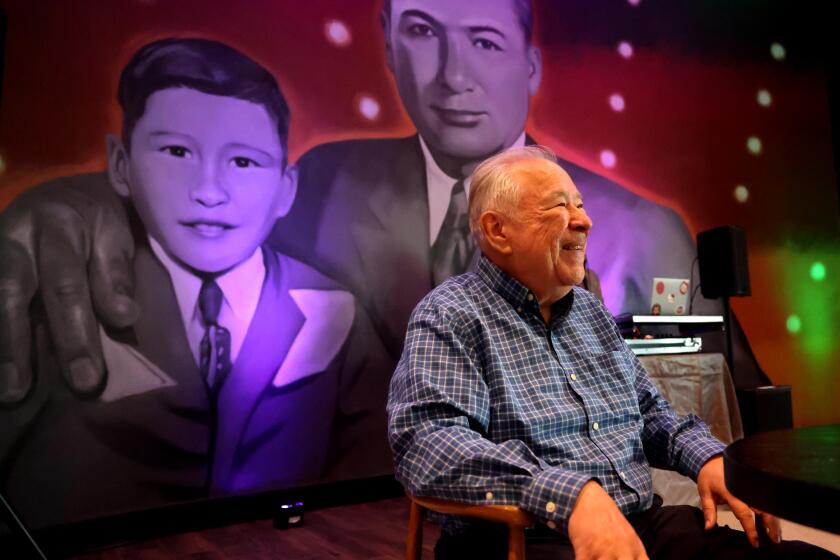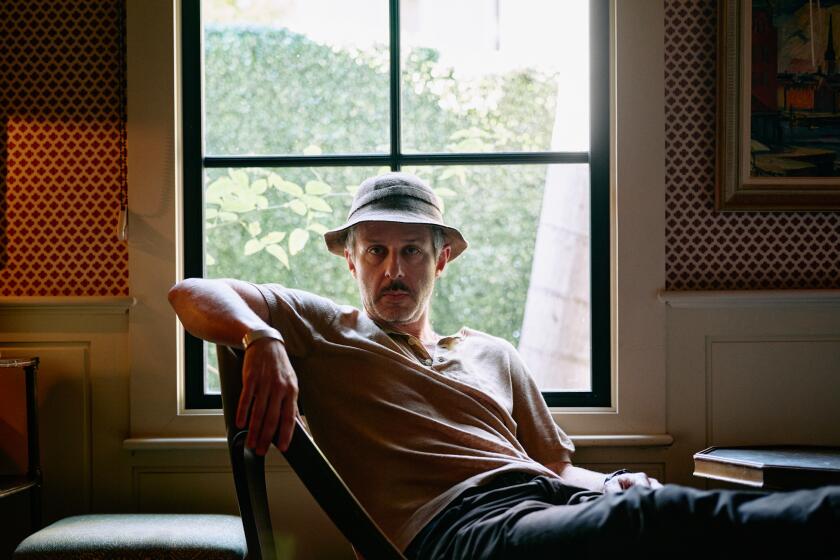Flaws Aside, Kubrick’s ‘Lolita’ Is Worth Look
When director Stanley Kubrick and novelist Vladimir Nabokov brought Nabokov’s controversial novel “Lolita” to the screen in 1962, they cast 15-year-old newcomer Sue Lyon in the title role without specifying her age, which in the book was only 12.
Most critics said that Lyon looked closer to 17, thus undercutting seriously the impact of the exquisite torture Nabokvov’s middle-aged Humbert Humbert endured in his fixation on what the novelist described famously as a “nymphet.”
Kubrick further did not make things easier for himself by shooting much of the film in England even though it is in part a road movie. He thus denied himself access to roadside Americana--always a ripe target for satire--which could have counterpointed Nabokov’s consideration of the deadly, darkly humorous absurdities of unrequited passion, further heightened by puritanical American mores.
Even so, “Lolita” is worth a look on the big screen, just as it was when first released, thanks to its sophisticated sensibility and James Mason’s heroic portrayal of Humbert and the impressive work of Shelley Winters and Peter Sellers. Lyon herself is in fact pretty good as the revised Lolita. (At 153 minutes, though, the film is still too long.)
It’s hard to imagine Adrian Lyne, director of “Flashdance,” “9 1/2 Weeks” and “Fatal Attraction,” improving upon Kubrick in his not-yet-released remake starring Jeremy Irons, Melanie Griffith and Frank Langella, with 14-year-old newcomer Dominique Swain as Lolita.
Mason’s Humbert is a professor of French literature who’s a visiting lecturer at a New England college. He checks out a room for rent in the large, tasteless home of Charlotte Haze (Winters), a vulgar man-hungry widow with literary pretensions. In the film’s signature shot, Humbert sees Lolita lounging in a two-piece bathing suit in the backyard, and Charlotte asks innocently, “What was the deciding factor?” when he abruptly agrees to take the room--and thus commences his tormented odyssey.
“Lolita” reminds us what a remarkable actor Mason was in his range and insight into the characters he played, and Winters is hilarious yet oddly touching as the impossibly shrill, foolish and possessive Charlotte, as dense as Humbert is perceptive. Early on Sellers’ Quilty, an eccentric, well-known playwright and TV writer, also a guest of the college, becomes Humbert’s determined nemesis for reasons of his own. Quilty’s various disguises allow Sellers to show off his wondrous way with accents. Mason and Sellers are sadly gone, but the indomitable Winters appears in Jane Campion’s upcoming film of Henry James’ “The Portrait of a Lady.”
* Unrated. Times guidelines: The film’s complex adult themes are unsuitable for children.
(BEGIN TEXT OF INFOBOX / INFOGRAPHIC)
‘Lolita’
James Mason: Humbert Humbert
Sue Lyon: Lolita Haze
Shelley Winters: Charlotte Haze
Peter Sellers: Clare Quilty
A TNT release of an MGM presentation of a Seven Arts production. Director Stanley Kubrick. Producer James B. Harris. Screenplay by Vladimir Nabokov; based on his novel. Cinematographer Oswald Morris. Editor Anthony Harvey. Costumes Elsa Fennell and Barbara Gillett. Music Nelson Riddle. Art director William Andrews. Set decorator Andrew Low. Running time: 2 hours, 33 minutes.
* Exclusively at the Nuart through Wednesday, 11272 Santa Monica Blvd., West Los Angeles, (310) 478-6379.
More to Read
Only good movies
Get the Indie Focus newsletter, Mark Olsen's weekly guide to the world of cinema.
You may occasionally receive promotional content from the Los Angeles Times.










